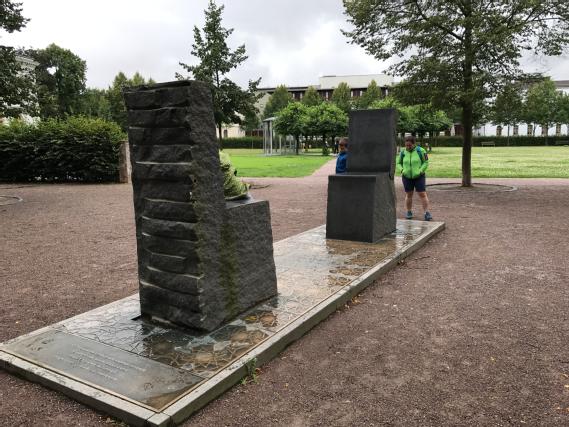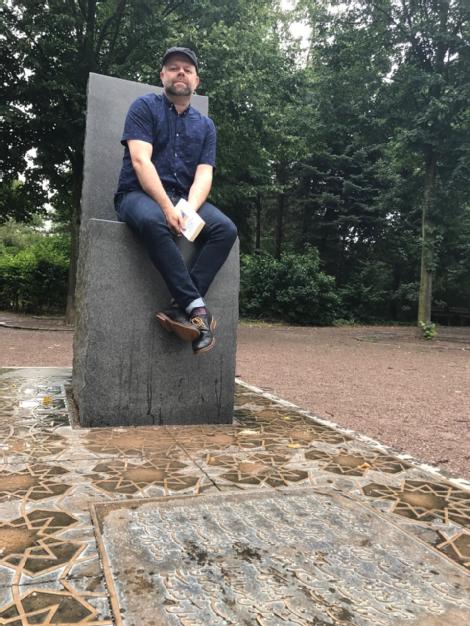Coventry schoolchildren to bring the idea of cultural exchange and shared heritage to life
- The Two Chairs Creative Writing competition open to all, with entries in both German and English
- Prizes of £250 in four categories Under and Over: 18 in both English and German
- Entries close on March 2nd, with British-Somali poet Momtaza Mehri, performance poet, writer and BBC Radio 3 presenter, Ian MacMillan, and British-Muslim writer Hanan Issa as judges
- Competition led by Dr James Hodkinson of the University of Warwick
- For more information on how to enter please click here.
 Following the city’s winning bid to become UK City of Culture, Coventry schoolchildren are taking part in a new competition to bring the idea of cultural exchange and shared heritage to life.
Following the city’s winning bid to become UK City of Culture, Coventry schoolchildren are taking part in a new competition to bring the idea of cultural exchange and shared heritage to life.
The Two Chairs Creative Writing competition, which is open to all across the UK invites people to see the world from the ‘other’ perspective.
Inspired by the Hafez-Goethe Monument of two empty chairs, the competition was started by Dr James Hodkinson of the University of Warwick and asks entrants to write and submit pieces in English or German, whether they be poems, short stories or prose, that express what the chairs say to them.
Prizes of £250 will be awarded to the winners of the Under 18 and Over 18 categories in both English in German.
The competition is open until March 2nd and entries will be judged by a team of poets and writers including British-Somali poet Momtaza Mehri, performance poet, writer and BBC Radio 3 presenter, Ian MacMillan, and British-Muslim writer Hanan Issa.
As part of the competition Dr Hodkinson is encouraging young people from across Coventry to get involved and will soon be speaking to local schoolchildren about the competition.
 Discussing the competition Dr James Hodkinson, of the University of Warwick’s School of Modern Languages and Cultures, said:
Discussing the competition Dr James Hodkinson, of the University of Warwick’s School of Modern Languages and Cultures, said:
“The Two Chairs Creative Writing Competition writing competition is open to everyone. It asks you to consider the two stone chairs of the 'Hafez-Goethe Monument' in Weimar, Germany. The chairs were left empty by the sculptors and allow anyone to occupy them, or even to ‘swap’ chairs and see the world from the ‘other’ perspective.
“I wanted to get people to write around this key idea - that we can be connected to people of other cultures, mixing and intertwining with them. I want writers to use this idea in their compositions, using personal or imagined experiences of encountering or crossing different cultures to produce the piece.”
The Hafez-Goethe Monument commemorates the work of the German poet Johann Wolfgang Goethe, whose collection of poems the West-Eastern Divan not only imagined a dialogue between the Christian European and Islamic worlds, but also sought to break down of rigid cultural divisions between them.
“The empty chairs not only represent Goethe and his Muslim counterpart, but allow anyone to occupy them, or even to ‘swap’ chairs and see the world from the ‘other’ perspective”, says Dr Hodkinson.
“Artists and commentators alike continue to be drawn to the monument and respond to it with their own creative works. The two chairs are separate, solid structures, implying two distinct individuals, cultures, or perspectives - and yet they are both cut from the same piece of stone. It’s important to note that the key message we can be connected to people of other cultures without losing our own identity. That balance between making connections and respecting difference, is key to the monument, key to my work, and I’ll be fascinated to see if this message is reflected in the competition entries.”
15 January 2017
Contact:
Tom Frew - Senior Press and Communications Manager
E: a dot t dot frew at warwick dot ac dot uk
T: +44 (0) 7785433155
